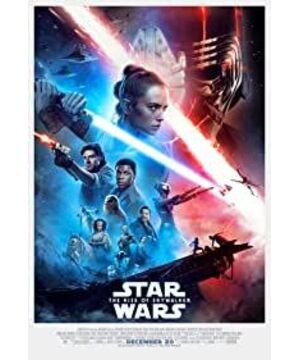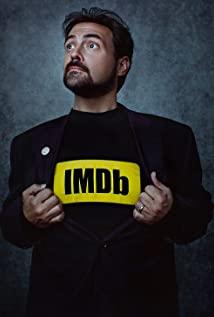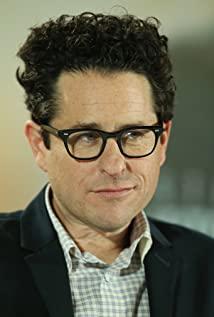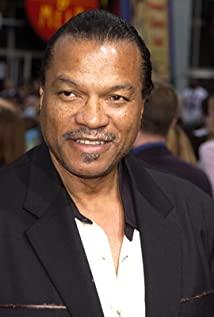"Star Wars Episode IX: The Rise of Skywalker" should theoretically end the story of the Skywalker family. The epic space opera that spanned 40 years of creation has come to an end, which should have filled Star Wars fans with sighs and feelings. However, the scores of the three major overseas rating websites IMDB, Rotten Tomatoes and Metacritic all collapsed, which means that even in foreign countries full of Star Wars feelings, "The Rise of Skywalker" can be called word-of-mouth poison. The Star Wars franchise appears to have suffered an unfortunate endgame.
RJ "subversion", JJ "revenge"
Two years ago, when the author evaluated "Star Wars 8: The Last Jedi", I had pointed out that the "Post-Sequel Trilogy" released in 2015 had serious creative planning problems. The original new "sequels" were directed by JJ Abrams, Ryan Johnson and Colin Trevorrow. However, "The Last Jedi" brutally cut off the new suspense set by "Star Wars 7: The Force Awakens", causing huge controversy. Later, it was reported that Trevorrow and Star Wars producers Disney and Lucasfilm were on the verge of fire. In the end, Disney "recalled" Abrams, but Abrams failed to complete the task of giving Star Wars "Bright Tail".
Throughout the trilogy, a feeling of "director's grudge" came to me. The suspense that Johnson pinched, including the identity of the new protagonist Rey and the new villain Snooker. Rey, as the representative of "The Force Awakens", fans thought she had an extraordinary life experience, but "The Last Jedi" revealed that she was just a poor orphan who was sold by her parents to a slave owner; Snoke is the first evil force in the galaxy. The "Supreme Leader" of the First Legion, fans thought he was the most difficult character in the trilogy, but was finally cut in half by his subordinate Kylo Ren in the middle of the movie.
In addition, "The Last Jedi" also tells the reason why the original protagonist Luke Skywalker went into seclusion, and why another new villain, Kylo Ren, fell into the dark side. However, related scenes have also been criticized, such as fans objecting to Johnson's portrayal of Luke as a self-defeating old man.
In the early stage of the production of the sequel trilogy, the outside world claimed that Disney gave the director a high degree of creative freedom, and the three directors also worked together to exchange the outline of the story. The Last Jedi shows that the latter is not true. Abrams painstakingly sketched out the suspense, Johnson did not bother to explain. As far as the creation of the trilogy is concerned, the middle film plays a role in succession, but Johnson seems to want to create a new story line from another stove.
Although Abrams returned to direct "The Rise of Skywalker," claiming that Johnson's creation did not really interfere with the original creative line, Abrams actually "revenge" Johnson. Johnson claimed that Rey was just an ordinary person, but "The Rise of Skywalker" revealed that Rey was the granddaughter of the original villain Palpatine; after Snoke's death, Kylo Ren became the ultimate villain in the finale, Abrams But "resurrection" Palpatine, let him return to play the biggest villain.
Even assuming that each film is 3 hours long, the trilogy adds up to a total of 540 minutes. The mutual denial of the two directors is equivalent to wasting precious film length. Such a creative mentality is often difficult to deliver good works. The first half of "The Rise of Skywalker" highlights the problem of "vindictiveness". In order to "twist back" the story set by Johnson, Abrams kept driving the characters from one scene to the next. They lingered on four different planets and completed a jailbreak aboard the Star Destroyer. The breathless changing mirrors quickly explain the plot, and the audience is easily exhausted. Because it was too late to digest the amount of information provided by the previous scene, the next wave of content has already invaded overwhelmingly.
After Rey and Kylo Ren battled Endor, the direction of the story finally became clear - the final battle would be the Resistance's reactionary attack on Palpatine's Sith fleet, with Rey and Kylo Ren serving as The existence of the Force binary twin challenges Palpatine himself.
The Force Twins, a glimpse of the bright spots
From the perspective of the broadening of the Star Wars imagination, the interaction between Rey and Kylo Ren is one of the few highlights of "The Rise of Skywalker". The concept of "twins" was first introduced to the film and meant Rey and Kylo Ren's Force potential reached a new level. The Force performance scene in "The Rise of Skywalker", so there will be more new ideas than the main and prequel.
The original force skills in the original and prequel movies are mainly space control, mind control, release lightning, after-death apparition, predicting the future and lightsaber blocking bullets. Now, Rey and Kylo Ren can create a space where only the two of them interact. Interaction does not only exist on a spiritual level, it can also be achieved on a material level. Although the two are in different positions, they can pass objects to each other and even engage in lightsaber fights.
This is probably one of the few "inheritances" of Abrams' creativity to Johnson. Johnson first set up Rey and Kylo Ren to communicate across the galaxy in The Last Jedi. For fans who are accustomed to the original and prequel style of The Force, Rey and Kylo Ren's skills may be too "magic". But Abrams rationalized this skill by elevating the meaning of the two in the working system of the Force, thus bringing something new to the Force scene of "The Rise of Skywalker".
In the sequel trilogy, "The Force Awakens" has the least creative ideas. After all, it is the restart of the Star Wars IP in the new owner's house after ten years. The outside world has high expectations for it, and the investors and the main creator are under great pressure. Abrams took a tricky route. He almost directly copied the framework of the first Star Wars movie "Star Wars 4: A New Hope". The main line of "The Force Awakens" is nothing more than a weak and decent party, with the help of a hero who turned out, to win the first battle against evil. Among them, the climax battle is the same as "A New Hope", which is a super weapon with amazing destructive power.
Abrams also added a lot of bridges and scenes that pay homage to the original trilogy of the 1970s and 1980s, creating a sentimental atmosphere for "The Force Awakens." Fans who haven't seen the true story of Luke, Leia Organa, and Han Solo's trio for many years will probably burst into tears when they see the old people appear.
But after enjoying the feelings, some people began to criticize "The Force Awakens" for copying the plot 40 years ago, which really lacked breakthroughs. In fact, Abrams's personal imagination is not bad. Whether it is the American drama "Lost" and "Edge of Crisis" produced by him, or the new version of the film "Star Trek" directed by him, there are many tricks in terms of scenes, settings and stories. Now that he has created a new style of Force confrontation scene in "The Rise of Skywalker", Abrams has made a name for himself.
The final battle, indifferent
Unfortunately, this kind of rectification is very incomplete. Abrams has never made a breakthrough in the broader creative concept. Just as "The Force Awakens" copied the framework of "A New Hope", "The Rise of Skywalker" is also in the decisive battle part, copying the framework of the main finale "Star Wars: Return of the Jedi".
Air combat, ground combat, and lightsaber combat run in parallel; the insurgent army is on the verge of being annihilated; the villain lures the hero into the dark side... Except for the basic layout and routing similar to "Return of the Jedi", even some details are close to the "restored" previous work. When Palpatine lured Luke into the dark side, he showed him how the Rebels were "moths to the flames"; decades later, when he lured Rey, it was the same routine, telling her that only by devoting herself to the dark side could save her disastrous friend. Even both films show the insurgents' troubled situation in aerial combat from Luke/Rey's point of view.
The bigger problem is that The Rise of Skywalker's showdown details are very rough. Abrams piled up a large number of spaceships and soldiers, but all the battle scenes used a monotonous "fire-hit" mode, which looked lively but was actually boring. The changes in the battle situation are only driven by changes in the forces of both sides, which is also very rigid. The battle scene is basically not switched, the air battle is in the air surrounded by the battleship, and the ground battle is on the outer deck of the battleship.
In contrast, in the ground battle of Naboo in "Star Wars 1: The Phantom Menace", the state of the Gungan energy shield is used as a sign of the changing situation of the battle. When the energy shield is in effect, the Gungans and the Trade Union robots engage in a battle against each other; when the robot army breaks into the range of the energy shield, the battle enters the melee mode. The two combat states before and after show different textures.
The Battle of Geonosis in "Star Wars 2: Attack of the Clones" also used force changes to promote the battle process, but it was better than the abundance of arms. In the beginning, it was the Jedi Knights who fought against the Geonosian and robot armies with cold weapons like lightsabers; after that, the clone army of the Republic came powerfully, and the battlefield began to be dominated by hot weapons. Different scenarios such as the counter-bombing of the vehicle and the support of the air vehicle to the ground combat have greatly enriched the layering of the battle.
The Battle of Scarif in "Star Wars Story: Rogue One", the ground battle includes elements such as infiltration, head-to-head confrontation and treasure hunting, and the air battle has three scenarios: space battle, atmospheric battle and close-ground battle. There is also a scene of Darth Vader boarding a ship massacre that makes fans scream, and its ups and downs are the most ups and downs of any Star Wars movie war.
Even compared to Return of the Jedi, The Rise of Skywalker pales in comparison. In the former battle of the forest moon of Endor, the primitive Iwok used clever strategy and home ground to cause a lot of trouble for the heavily armed Imperial stormtroopers. Although many movie fans complain that such a bridge is too "fantasy", at least the battle scene of using traps to defeat the enemy is a little more beautiful than the simple bombing of the two armies.
The climactic battle of "The Rise of Skywalker" seems to be just playing with the balance's travel code. Whichever pallet the travel code moves to, whichever pallet has the upper hand. In other Star Wars movie battles, different objects and weights are placed on the tray to enrich the determinants of the balance change.
Copying the framework of the previous work is already suspected of cutting corners, and the lack of polishing the details further reflects the obvious creative inertia of the decisive battle of "The Rise of Skywalker". A war that was not worthy of Star Wars' "Epic End" became the epitome of the chaos of the entire sequel trilogy. Disney and Lucasfilm are also working on new Star Wars trilogy films that, hopefully, will break the mold and recreate the saga of the Star Wars imagination at the forefront.
View more about Star Wars: Episode IX - The Rise of Skywalker reviews











